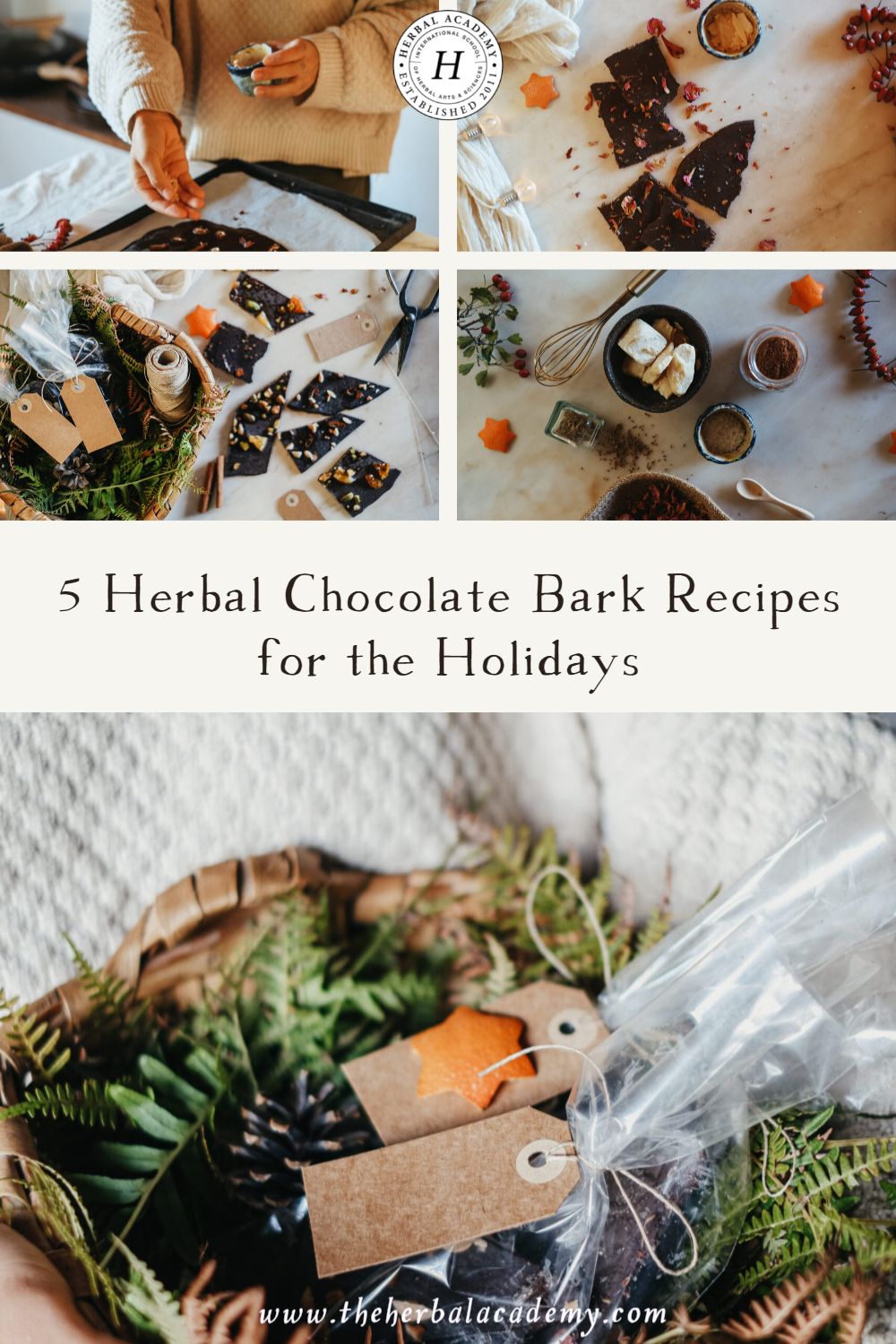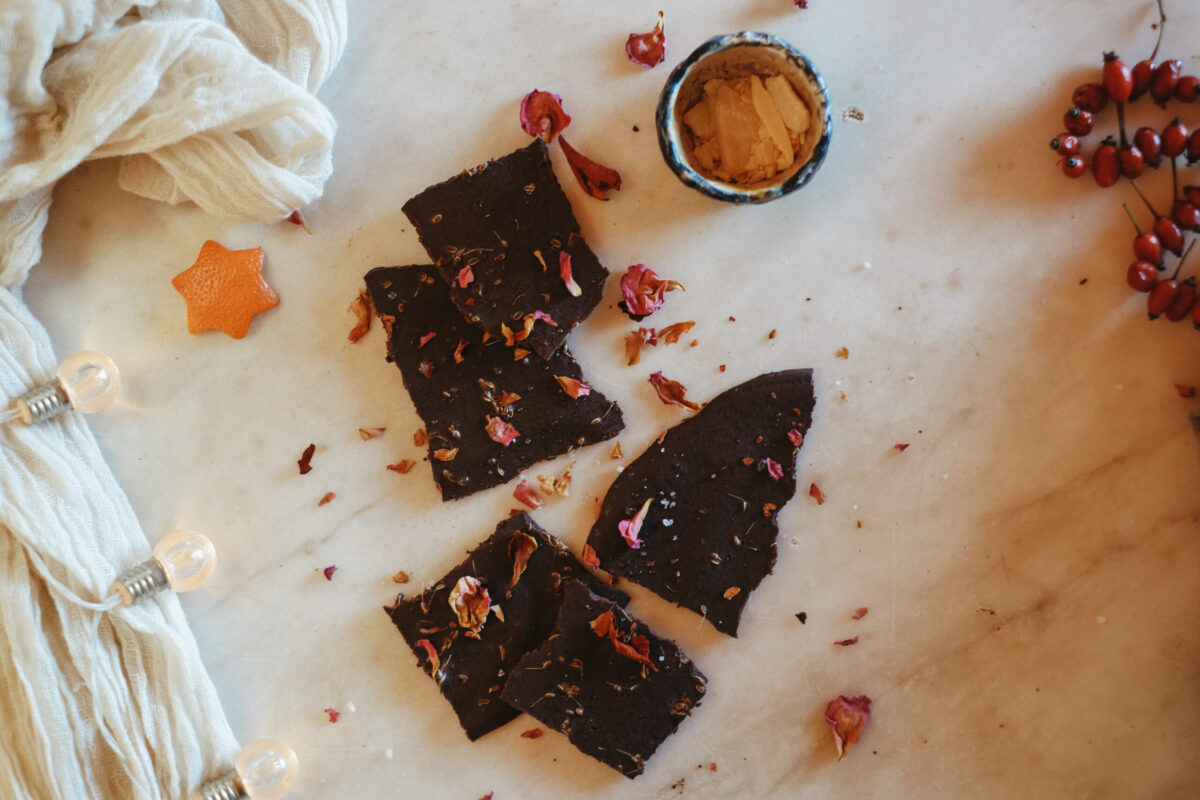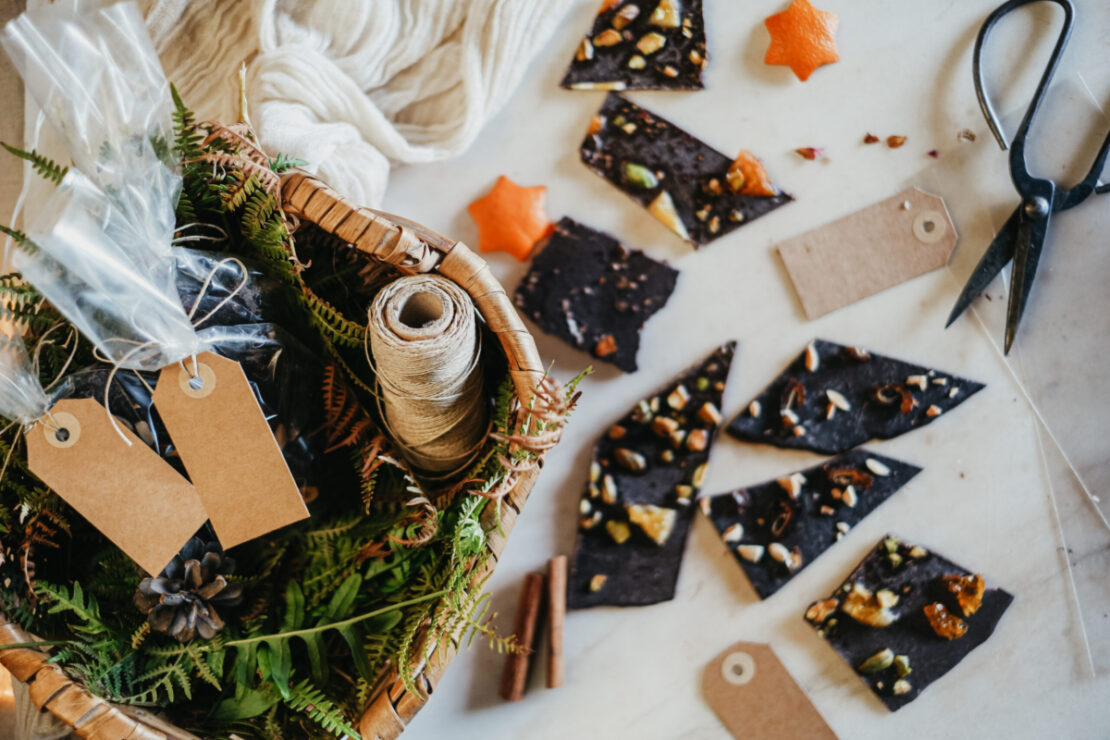
5 Herbal Chocolate Bark Recipes for the Holidays
With a whole string of winter holidays ahead, the busiest gift-giving time of year is upon us. One of my holiday strategies is to keep a little stash of goodies I can grab on my way out the door to whatever gathering is on the schedule. I find that homemade gifts always make a good impression, especially when you’ve gone to the trouble of making them from scratch using high-quality ingredients. These homemade chocolate bark recipes are a treat that always wow the lucky recipient.
These recipes go one step further than most chocolate bark recipes in that you actually make the chocolate bark base. It only takes a few quality ingredients to make a luscious and creamy dark chocolate canvas you can paint with toppings to please any palate. Whether I need an item for a gift exchange or a host gift, or if a one-on-one hang turns into an unexpected gift exchange, I find these homemade chocolates never cease to impress. Who doesn’t like getting chocolate?!
Packaged up in cute seasonally themed cellophane bags, tied with twine, and labeled with the ingredients list, you can store these festive chocolates in a cool, dark place and have them ready to grab and go all season long. The effort, care, and intention that go into these chocolate barks make them a truly special gift.
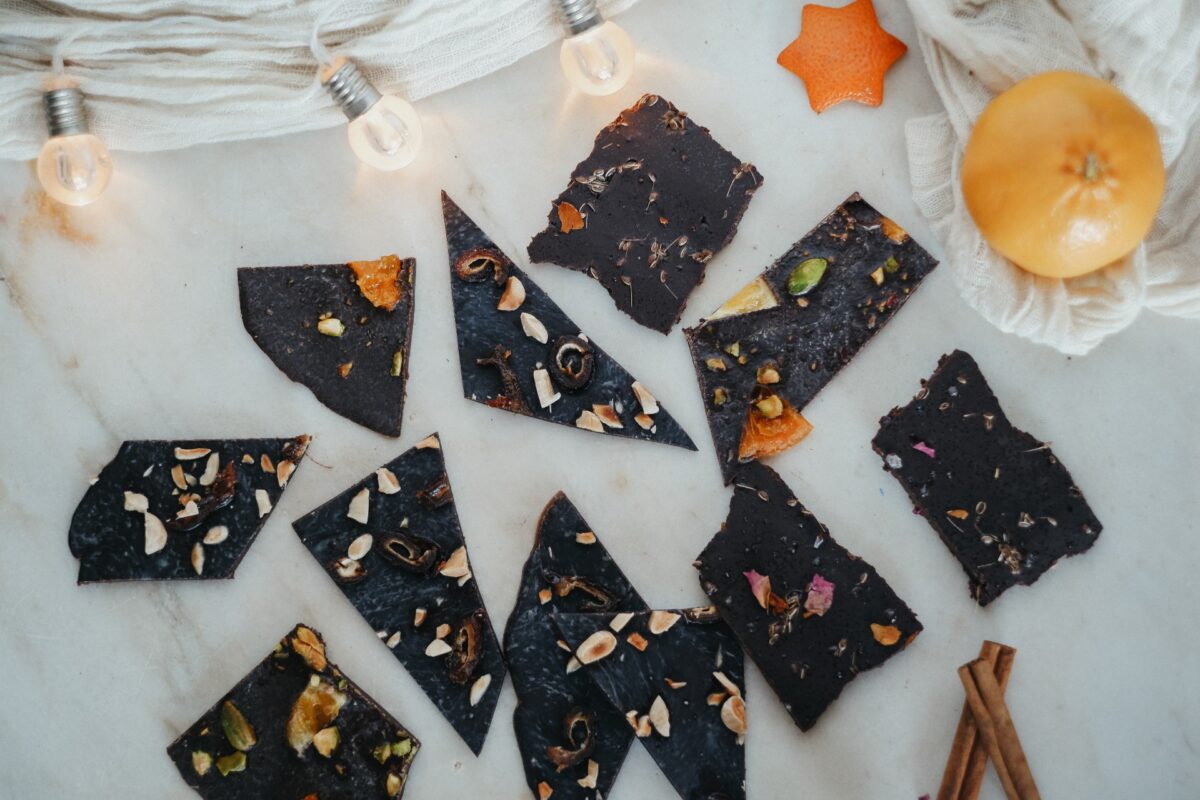
5 Chocolate Bark Recipes For the Holidays: A World of Options
The basis for these recipes is actually from a recipe I found years ago on the Herbal Academy blog when I was teaching herbalism workshops in Phoenix, Arizona. The texture of the chocolate from this recipe is so fantastically creamy and the depth of cocoa flavor is unlike any other chocolate I’ve ever had. Since I loved the texture and flavor of the chocolate so much, I took the basics of the recipe and made it my own over and over and over again.
There are many possibilities when it comes to flavoring and topping your chocolate bark, and I have found this to be a perfect vehicle for some of my favorite aromatic herbal allies. As with most of my favorite recipes, this chocolate bark recipe is one that you can build on endlessly, with only your tastebuds to limit you. Allow me to share a few of my favorite recipes to get your creative juices flowing.
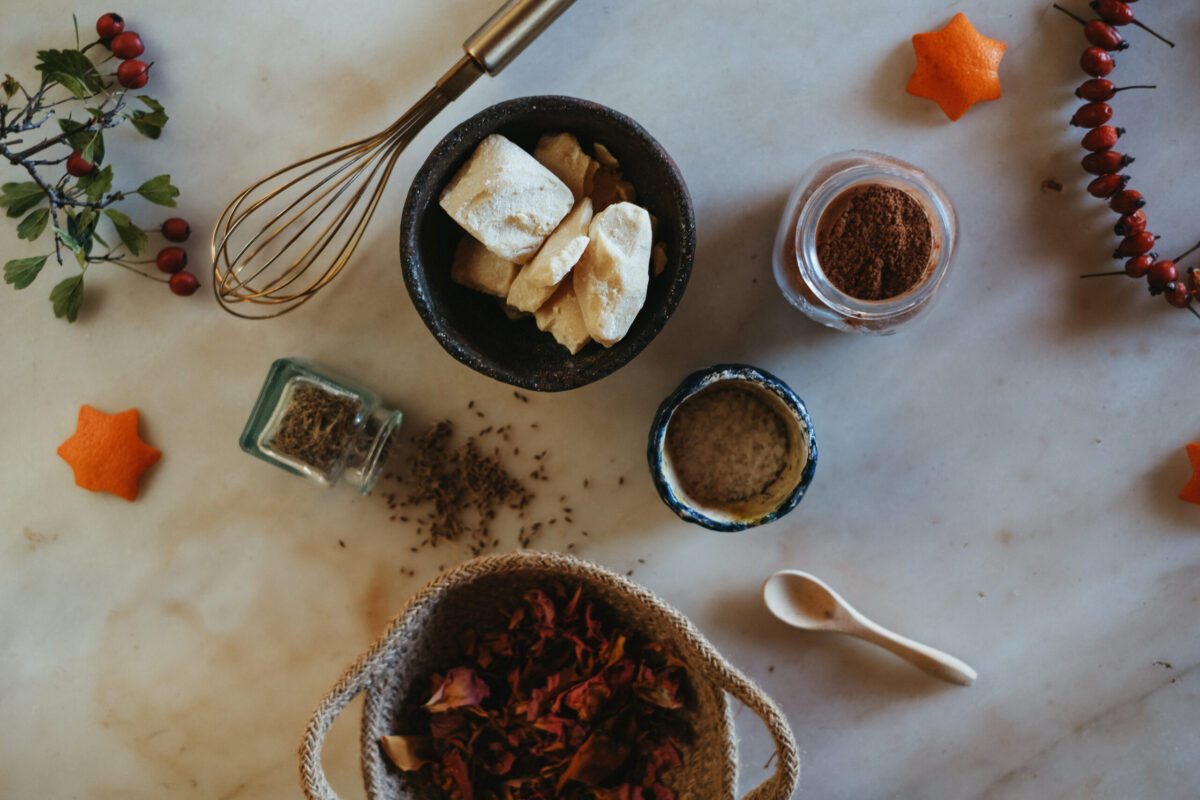
Rose Petal, Candied Fennel Seed, & Sea Salt Chocolate Bark
This chocolate bark gives flavors of being sweet and floral with a hint of salt.
1 cup food-grade cocoa butter Once all your toppings and mix-ins are prepared, you can start on the chocolate bark base.
1 cup Dutch processed cocoa powder
¾ cup honey
1 teaspoon vanilla (Vanilla planifolia) bean extract
Pinch of sea salt
2 tablespoons dried rose (Rosa spp.) petals, powdered
2 tablespoons flaked sea salt
2 tablespoons fennel (Foeniculum vulgare) seed
3 tablespoons water
3 tablespoons sugar
To Use:
Once cooled, break the bark apart, package it up in cute little bags, label it, and place the bags in a cool, dark place for storage.
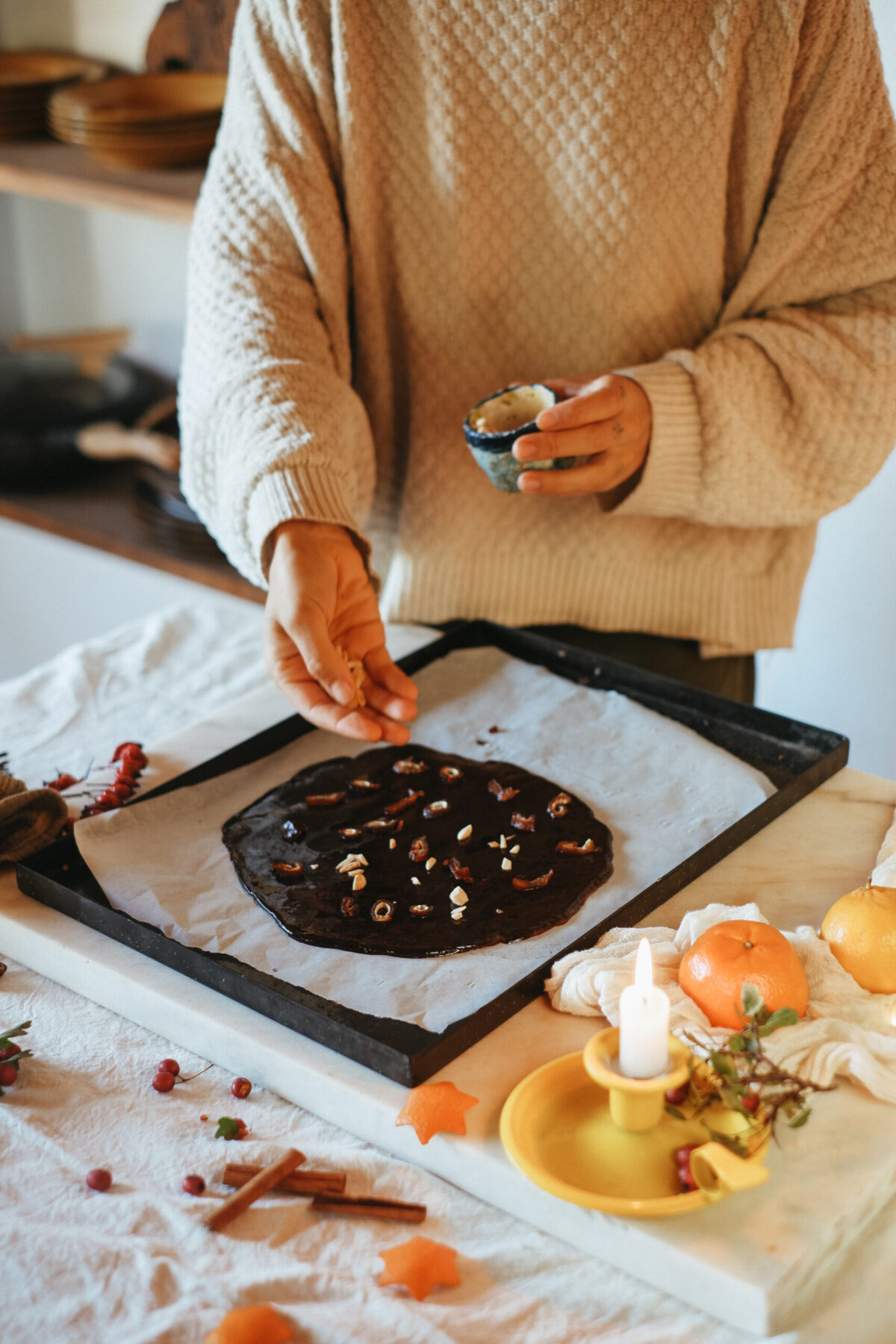
Date, Cinnamon, & Almond Chocolate Bark
Cinnamon makes this chocolate bark taste warm and familiar and pairs well with the sweet dates and crunchy almonds.
1 cup food-grade cocoa butter
1 cup Dutch processed cocoa powder
¾ cup honey
1 teaspoon vanilla (Vanilla planifolia) bean extract
Pinch of sea salt
¼ cup dates, chopped
¼ cup almonds, sliced
½ teaspoon cinnamon (Cinnamomum spp.), powdered
To Use:
Once cooled, break the bark apart, package it up in cute little bags, label it, and place the bags in a cool dark place for storage.
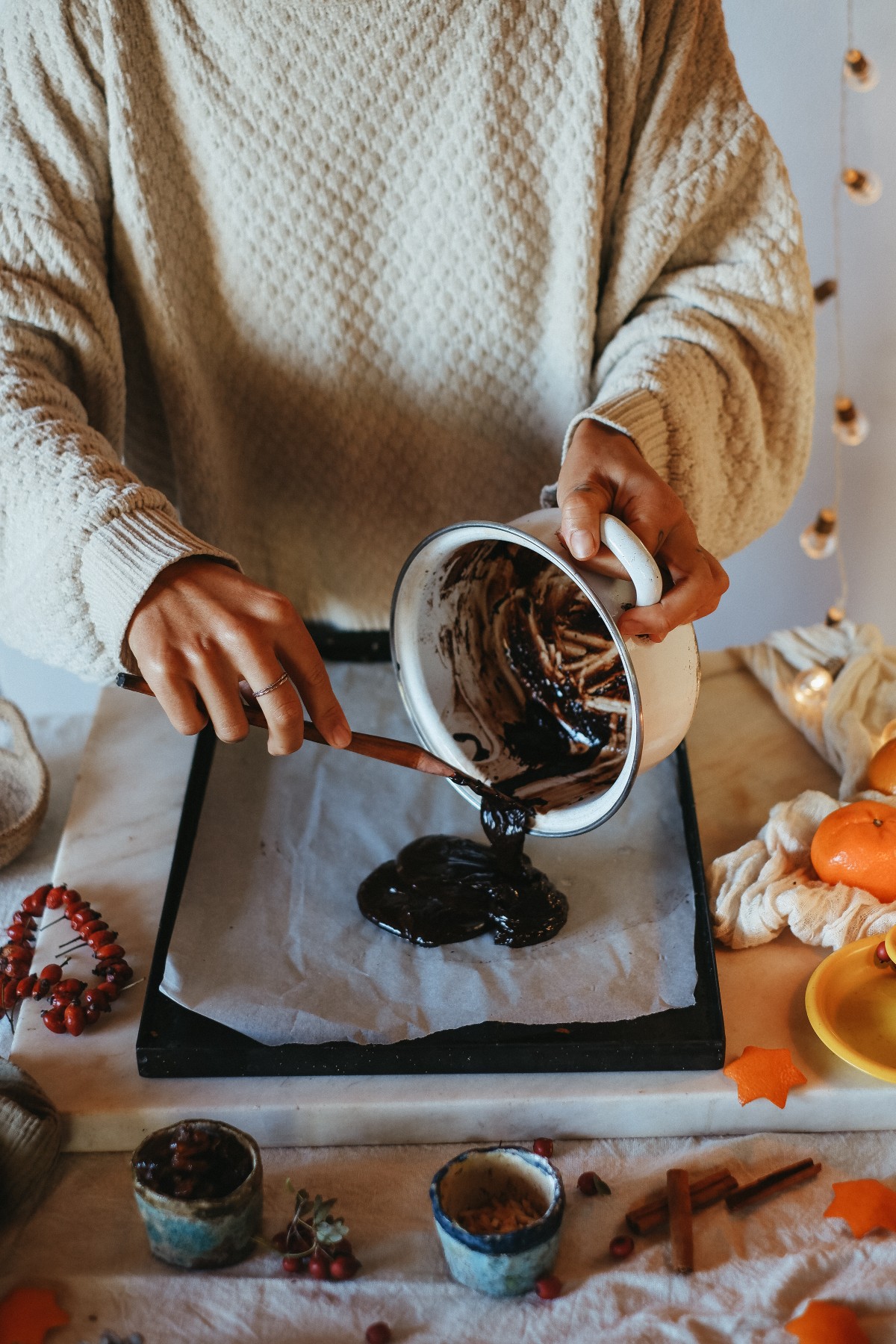
Coconut, Apricot, & Crystallized Ginger Chocolate Bark
When you combine coconut, apricot, and ginger, you get a pleasant flavor that is fruity and zingy!
1 cup food-grade cocoa butter
1 cup Dutch processed cocoa powder
¾ cup honey
1 teaspoon vanilla (Vanilla planifolia) bean extract
Pinch of sea salt
¼ cup dried apricots, sliced
¼ cup crystalized ginger (Zingiber officinale)
2 tablespoons coconut flakes
To Use:
Once cooled, break the bark apart, package it up in cute little bags, label it, and place the bags in a cool dark place for storage.
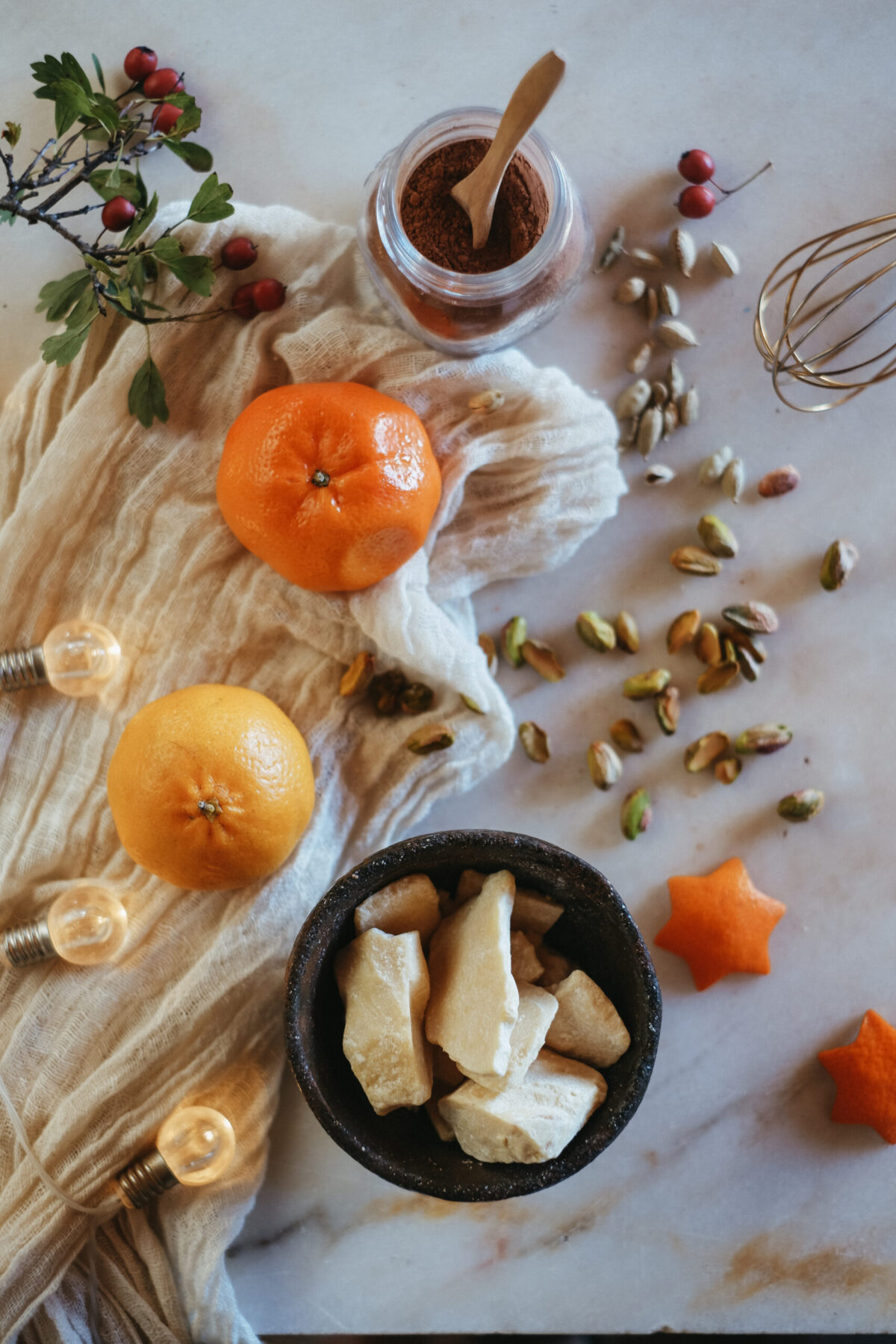
Candied Orange, Pistachio, & Cardamom Chocolate Bark
Nothing says the holidays like orange and cardamom combined, making this chocolate bark taste savory and sweet with a crunch of pistachios.
1 cup food-grade cocoa butter
1 cup Dutch processed cocoa powder
¾ cup honey
1 teaspoon vanilla (Vanilla planifolia) bean extract
Pinch of sea salt
¼ cup pistachios, crushed
5-6 candied orange slices
½ teaspoon cardamom (Elettaria cardamomum) seed, powdered
To Use:
Once cooled, break the bark apart, package it up in cute little bags, label it, and place the bags in a cool dark place for storage.
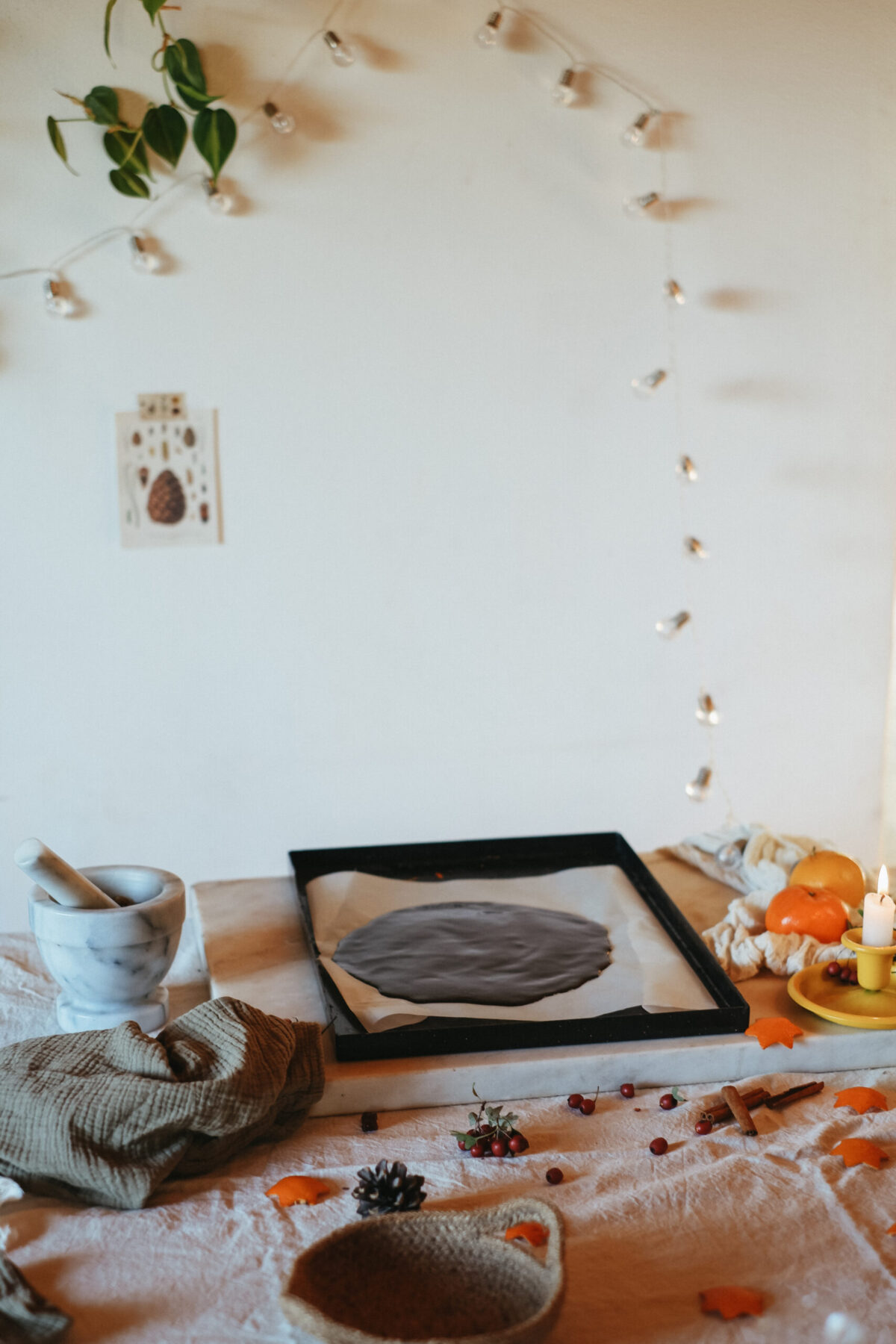
Mango, Chili, and Lime Chocolate Bark
Looking for a new flavor twist for your next chocolate bark adventure? Mango slices, cayenne, and limes make this delicious treat taste tropical and spicy!
1 cup food-grade cocoa butter
1 cup Dutch processed cocoa powder
¾ cup honey
1 teaspoon vanilla (Vanilla planifolia) bean extract
Pinch of sea salt
1-2 limes
¼ cup dried mango slices
¼ teaspoon cayenne, powdered
To Use:
Once cooled, break the bark apart, package it up in cute little bags, label it, and place the bags in a cool dark place for storage.
Pro Tips
It takes only a handful of ingredients to make your chocolate dreams a reality. The ingredients in these recipes are simple, and because of this, it’s worth it to invest in quality products. Rather than buying regular cocoa powder I always use a Dutch-processed cocoa for this recipe. Dutch-processed cocoa powder has a more rounded flavor and can be less bitter than non-Dutch cocoa powders.
Food-grade cocoa butter was impossible to find in any of my local Midwest grocery stores, but I was able to find a good quality option here. When it comes to honey, raw local honey is the way to go, but if you can’t find honey produced near you, most grocery stores have a raw honey option available. I try to buy local, organic, and fair-trade ingredients when possible to support sustainable and ethical farming and trading practices.
It is important to prepare all your bark toppings prior to making the bark base, as you’ll want them ready at hand to top the chocolate bark right away while the surface is still melty. When you’re ready to place the toppings on the melted chocolate base, start with the larger toppings first, then work your way to the smaller-sized toppings.
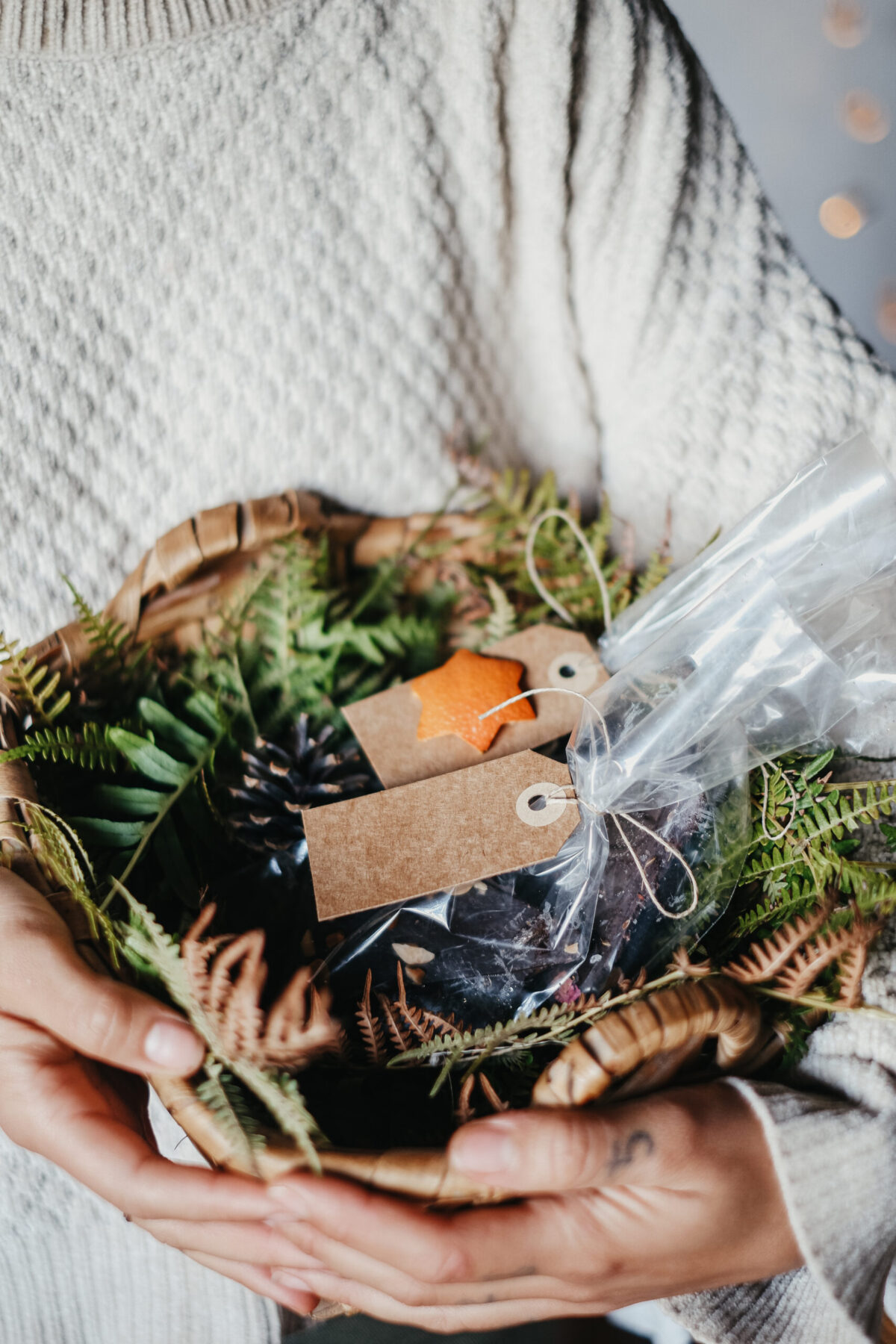
Wrapping It Up
These homemade chocolate bark recipes are delectable treats you can make and keep on hand through the holiday season. With a few simple ingredients and minimal time, these gorgeous candies come together to delight. These are great for grabbing on your way out the door to see your hairdresser or for leaving in the mailbox for your postal worker. You can take this bark as a treat for your holiday party hosts or teachers at your kids’ school. Keeping these on hand makes it easy to spread cheer all season long!
